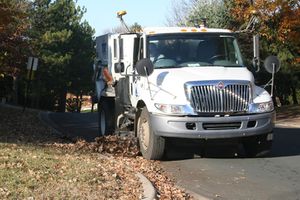
Minnesota Stormwater Manual email Updates
Over the past several years we've heard from people suggesting they be notified when updates are made to the Minnesota Stormwater Manual. We have also identified several stormwater management concerns and felt that focused communication on these specific issues might be useful. We therefore decided that periodic emails to subscribers would be one way of notifying practitioners about updates to the Manual and focus on specific stormwater issues. Emails are sent periodically, roughly every 6-12 weeks.
The emails contain only a short description of updates and other information. This page provides more detailed information. It is organized by the approximate dates when emails are sent to subscribers. We welcome recommendations for featured topics and links to case studies and other items of information. Please contact Mike Trojan at the MPCA..
Subscribe to the email list here.
June 21, 2021
Updates to the Manual
- Street sweeping: For the past two years we have been working with U of MN researchers and our contractor to develop a calculator to estimate phosphorus reductions associated with street sweeping. The calculator, a simple Excel workbook, is now available, along with a User Guide. Phosphorus crediting is based on measurements of sweeping material collected (wet or dry mass, or organic matter content). Standard Operating Procedures have also been developed. On May 13, we held a webinar that included an overview of the calculator, guidance, and presentations from nationally recognized researchers.
- MIDS Calculator: The Minimal Impact Design Standards (MIDS) Calculator has been updated to Version 4. The calculator can be accessed at this link. The Manual contains a page summarizing updates to the calculator. The updates, with links, are summarized below.
- Constructed ponds with an iron bench
- Intensive green roofs
- Updated pollutant removals
- Bioretention media mix option
- Media amendments
- Tree rooting depth
- Tree canopy interception
- Viewing phosphorus results
- Restrictions on infiltration in D soils
- Accounting for bypass in non-infiltration and undersized BMPs
- Sand filter design levels and updated phosphorus removal
- Swale configuration and routing
- Reuse project list: Information on more than 50 reuse projects in Minnesota was added to the Manual. This includes information on source water type, end use, treatment, and more. If you know of reuse projects not included in the table and would like them included, please contact mike.trojan@state.mn.us.
What are we working on
- Street sweeping: We are developing guidance on street sweeping (e.g. when and where to sweep, costs, managing sweeping wastes, etc.) and that should be available in early summer. We also expect to provide information on how to incorporate sweeping into the MIDS Calculator.
- Engineered media: We continue to populate the Manual with information on engineered media, including amendments and materials in engineered media. This is a significant project and will continue through the summer. We continue to work closely with University of Minnesota researchers working on bioretention media. Most recently we have added information on wood chips and calcium-based water treatment residuals. Click on this link for more information.
- Green infrastructure: A long-term project to improve information on Green Stormwater Infrastructure in the Manual started earlier this year. We recently added some case studies and anticipate having information on O&M this summer.
- Vegetation: Another long-term project to improve information in the Manual, this work has only recently started and is in a scoping phase to identify information needs on the topic of vegetation in stormwater practices.
- Managing stormwater media waste: By this summer we expect to have information on disposal and management of engineered media used in stormwater applications, focused primarily on bioretention media.
Featured article - Pretreatment The Minnesota Construction Stormwater Permit requires pretreatment for filtration and infiltration practices. Forebays or other pretreatment practices are highly recommended for constructed stormwater ponds. The permit, however, does not specify the type of or sizing for pretreatment practices. We are discovering that many stormwater best management practices (bmps, also often called stormwater control measures or scms) are not performing as designed, often due to heavy sediment loads to the bmp and to poor design.
Proper pretreatment can extend the life and improve performance of downstream bmps. But we frequently hear stories about inadequate or improperly designed pretreatment. This is unfortunate, since the Manual contains a wealth of information on pretreatment. For example, did you know the Manual contains the following?
- A pretreatment selection tool
- Tables with information and links to information on design, sizing, pollutant removal, installation, and maintenance
- Sizing guidelines
- Guidance for managing wastes from pretreatment practices
- Case studies
We realize, however, this information could be better organized and made more accessible. So, we hope to execute a work order this summer to better organize the information on pretreatment. You can help by providing the following (NOTE: We cannot endorse or promote specific commercial products, processes, or services).
- Examples (case studies) of good and bad pretreatment practices you are finding
- Photos
- Comments and suggestions for improving information on pretreatment
Some other stuff of interest
- Stormwater is a major pathway for microplastics to receiving waters. Bioretention is an effective practice for retaining microplastics. ES&T Water, May, 2021.
- Stormwater Receives a ‘D’ in First-Ever ASCE Report Card Appearance - ASCE’s D+ for stormwater infrastructure results from decades of chronic underinvestment. Stormwater Report, March 2021.
- Nevada becomes the first state to formally ban “non-essential” grass. Digital Journal
- Stormwater newsletters
- On-going webinar series
- Stormwater research
